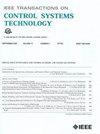优化配水网光伏板数量
IF 3.9
2区 计算机科学
Q1 AUTOMATION & CONTROL SYSTEMS
引用次数: 0
摘要
本文介绍了一种确定通过并网光伏为配水网络供电的最佳光伏(pv)数量近似值的方法。该程序旨在找到PV数量,使WDN在PV寿命期内的总预期成本最小化。该方法遵循一个迭代过程,从PV数量的初始估计开始,然后计算WDN运行的总成本。为了计算WDN的总成本,我们基于概率PV生产模型对代表未来生产的PV功率曲线进行了采样。假设这些采样的PV剖面为WDN供电,并使用为PV供电的WDN设计的控制方法确定泵流量,进行了模拟。在仿真之后,计算了WDN的总开销。由于我们无法获得导数信息,我们采用无导数的Nelder-Mead方法来迭代调整PV量以找到最优值的近似值。该程序适用于丹麦兰德斯镇的WDN。通过确定最佳PV数量的近似值,我们观察到与没有PV安装的情况相比,WDN成本降低了14.5%,假设PV面板的使用寿命为25年。本文章由计算机程序翻译,如有差异,请以英文原文为准。
Optimizing Photovoltaic Panel Quantity for Water Distribution Networks
The article introduces a procedure for determining an approximation of the optimal amount of photovoltaics (PVs) for powering water distribution networks (WDNs) through grid-connected PVs. The procedure aims to find the PV amount, minimizing the total expected cost of the WDN over the lifespan of the PVs. The approach follows an iterative process, starting with an initial estimate of the PV quantity and then calculating the total cost of WDN operation. To calculate the total cost of the WDN, we sample PV power profiles that represent the future production based on a probabilistic PV production model. Simulations are conducted assuming these sampled PV profiles power the WDN, and pump flow rates are determined using a control method designed for PV-powered WDNs. Following the simulations, the overall WDN cost is calculated. Since we lack access to derivative information, we employ the derivative-free Nelder-Mead method for iteratively adjusting the PV quantity to find an approximation of the optimal value. The procedure is applied for the WDN of Randers, a Danish town. By determining an approximation of the optimal quantity of PVs, we observe a 14.5% decrease in WDN costs compared to the scenario without PV installations, assuming a 25-year lifespan for the PV panels.
求助全文
通过发布文献求助,成功后即可免费获取论文全文。
去求助
来源期刊

IEEE Transactions on Control Systems Technology
工程技术-工程:电子与电气
CiteScore
10.70
自引率
2.10%
发文量
218
审稿时长
6.7 months
期刊介绍:
The IEEE Transactions on Control Systems Technology publishes high quality technical papers on technological advances in control engineering. The word technology is from the Greek technologia. The modern meaning is a scientific method to achieve a practical purpose. Control Systems Technology includes all aspects of control engineering needed to implement practical control systems, from analysis and design, through simulation and hardware. A primary purpose of the IEEE Transactions on Control Systems Technology is to have an archival publication which will bridge the gap between theory and practice. Papers are published in the IEEE Transactions on Control System Technology which disclose significant new knowledge, exploratory developments, or practical applications in all aspects of technology needed to implement control systems, from analysis and design through simulation, and hardware.
 求助内容:
求助内容: 应助结果提醒方式:
应助结果提醒方式:


